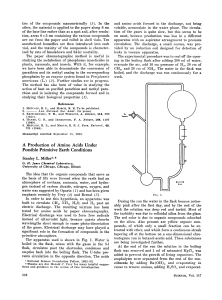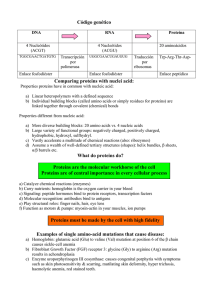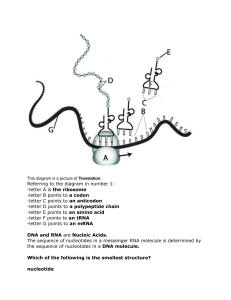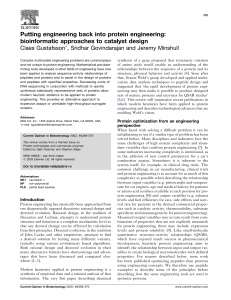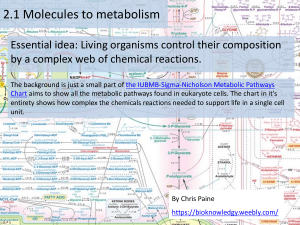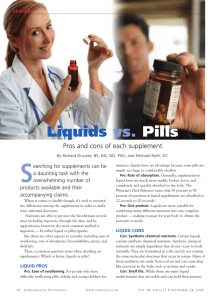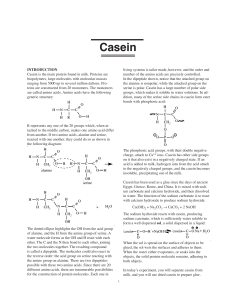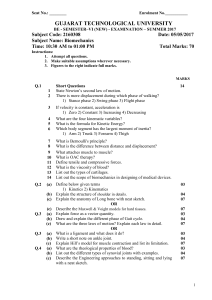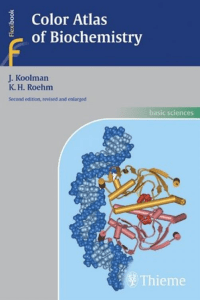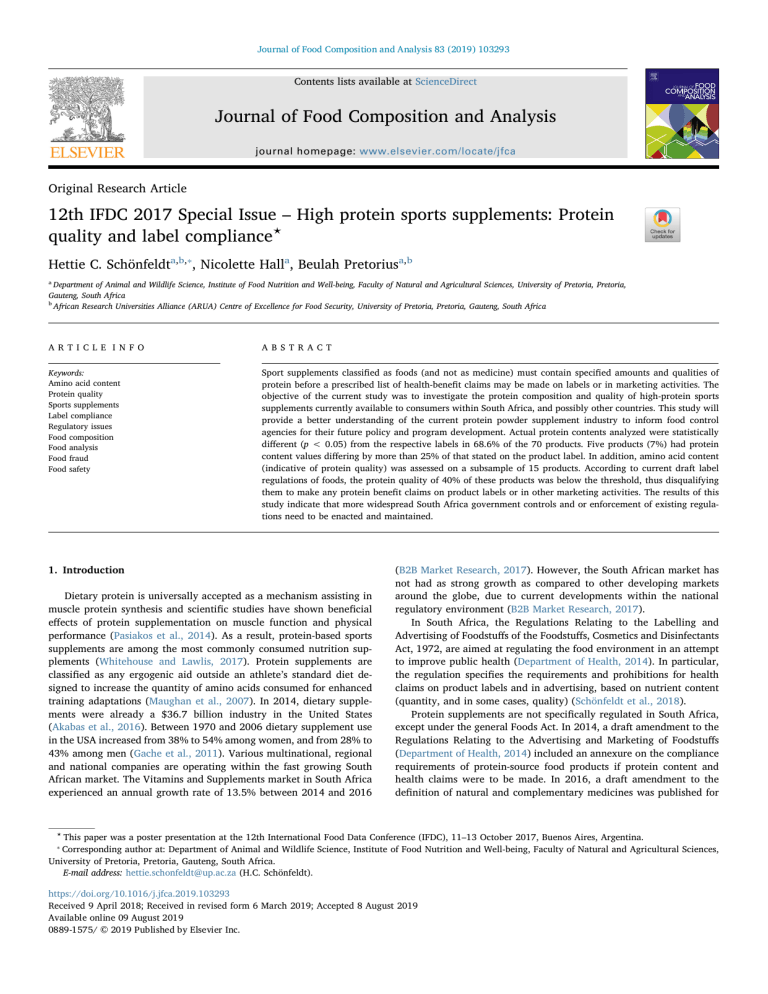
Journal of Food Composition and Analysis 83 (2019) 103293 Contents lists available at ScienceDirect Journal of Food Composition and Analysis journal homepage: www.elsevier.com/locate/jfca Original Research Article 12th IFDC 2017 Special Issue – High protein sports supplements: Protein quality and label compliance⋆ T ⁎ Hettie C. Schönfeldta,b, , Nicolette Halla, Beulah Pretoriusa,b a Department of Animal and Wildlife Science, Institute of Food Nutrition and Well-being, Faculty of Natural and Agricultural Sciences, University of Pretoria, Pretoria, Gauteng, South Africa b African Research Universities Alliance (ARUA) Centre of Excellence for Food Security, University of Pretoria, Pretoria, Gauteng, South Africa A R T I C LE I N FO A B S T R A C T Keywords: Amino acid content Protein quality Sports supplements Label compliance Regulatory issues Food composition Food analysis Food fraud Food safety Sport supplements classified as foods (and not as medicine) must contain specified amounts and qualities of protein before a prescribed list of health-benefit claims may be made on labels or in marketing activities. The objective of the current study was to investigate the protein composition and quality of high-protein sports supplements currently available to consumers within South Africa, and possibly other countries. This study will provide a better understanding of the current protein powder supplement industry to inform food control agencies for their future policy and program development. Actual protein contents analyzed were statistically different (p < 0.05) from the respective labels in 68.6% of the 70 products. Five products (7%) had protein content values differing by more than 25% of that stated on the product label. In addition, amino acid content (indicative of protein quality) was assessed on a subsample of 15 products. According to current draft label regulations of foods, the protein quality of 40% of these products was below the threshold, thus disqualifying them to make any protein benefit claims on product labels or in other marketing activities. The results of this study indicate that more widespread South Africa government controls and or enforcement of existing regulations need to be enacted and maintained. 1. Introduction Dietary protein is universally accepted as a mechanism assisting in muscle protein synthesis and scientific studies have shown beneficial effects of protein supplementation on muscle function and physical performance (Pasiakos et al., 2014). As a result, protein-based sports supplements are among the most commonly consumed nutrition supplements (Whitehouse and Lawlis, 2017). Protein supplements are classified as any ergogenic aid outside an athlete’s standard diet designed to increase the quantity of amino acids consumed for enhanced training adaptations (Maughan et al., 2007). In 2014, dietary supplements were already a $36.7 billion industry in the United States (Akabas et al., 2016). Between 1970 and 2006 dietary supplement use in the USA increased from 38% to 54% among women, and from 28% to 43% among men (Gache et al., 2011). Various multinational, regional and national companies are operating within the fast growing South African market. The Vitamins and Supplements market in South Africa experienced an annual growth rate of 13.5% between 2014 and 2016 (B2B Market Research, 2017). However, the South African market has not had as strong growth as compared to other developing markets around the globe, due to current developments within the national regulatory environment (B2B Market Research, 2017). In South Africa, the Regulations Relating to the Labelling and Advertising of Foodstuffs of the Foodstuffs, Cosmetics and Disinfectants Act, 1972, are aimed at regulating the food environment in an attempt to improve public health (Department of Health, 2014). In particular, the regulation specifies the requirements and prohibitions for health claims on product labels and in advertising, based on nutrient content (quantity, and in some cases, quality) (Schönfeldt et al., 2018). Protein supplements are not specifically regulated in South Africa, except under the general Foods Act. In 2014, a draft amendment to the Regulations Relating to the Advertising and Marketing of Foodstuffs (Department of Health, 2014) included an annexure on the compliance requirements of protein-source food products if protein content and health claims were to be made. In 2016, a draft amendment to the definition of natural and complementary medicines was published for ⋆ This paper was a poster presentation at the 12th International Food Data Conference (IFDC), 11–13 October 2017, Buenos Aires, Argentina. Corresponding author at: Department of Animal and Wildlife Science, Institute of Food Nutrition and Well-being, Faculty of Natural and Agricultural Sciences, University of Pretoria, Pretoria, Gauteng, South Africa. E-mail address: hettie.schonfeldt@up.ac.za (H.C. Schönfeldt). ⁎ https://doi.org/10.1016/j.jfca.2019.103293 Received 9 April 2018; Received in revised form 6 March 2019; Accepted 8 August 2019 Available online 09 August 2019 0889-1575/ © 2019 Published by Elsevier Inc. Journal of Food Composition and Analysis 83 (2019) 103293 H.C. Schönfeldt, et al. Table 1 Methods of analyses, accreditation status and limit of detection (LOD) for each method used for the nutrient analyses of high protein sports supplements. Nutrient Method description Energy (kj/100 g) Moisture (g/100 g) Ash (g/100 g) Protein (g/100 g) Calculation Ovendrying at 105°C for 16 hours Muffel furnace, 550 C overnight Nitrogen by Dumas method b Protein was calculated as nitrogen multiplied by respective Jones factor Gas chromatography with flame ionization detector (GC–FID) AOAC 996.06 Total fat (g/100 g) Total saturated fat Total monounsaturated fat Total polyunsaturated fat Total trans fat Glycemic carbohydrates (g/100 g) Total sugars (g/100 g) Sodium (mg/100 g) Enzymatic method Sum of glucose, fructose, galactose, sucrose, maltose, lactose and trehalose Atomic absorption Limit of Detection a 0.1 0.1 0.1 Yes Yes Yes 0.1 0.01 0.1 0.01 0.01 0.6 0.3 0.01 Yes Accreditation Status Yes Yes Yes a Methods accredited by the South African National Accreditation System (SANAS) (www.sanas.co.za). Protein was calculated as nitrogen multiplied by either 6.25 (for mixed sources of protein) or 6.38 (products for which the ingredient lists only declared dairy sources of protein) (Greenfield and Southgate, 2003; Department of Health, 2014). b nutrient analyses and care was taken to include all brands. These products were randomly selected from retail shelves in two phases (Phase 1: n = 70 and Phase 2: n = 15). Two samples of each product with different batch numbers were independently purchased on different days in January 2015 (Phase 1) and May 2017 (Phase 2) from 9 different retailers in Gauteng, South Africa. Two representative samples of each product purchased were coded to prevent bias and sent for nutrient analyses to independent laboratories using accredited methods. During phase 2, protein quality of the products was further explored by determining the complete amino acid profile of 15 selected protein supplements. Table 2 Minimum amounts of selected essential amino acids required per gram protein present in a food product to allow protein benefit claims on product labels (Department of Health, 2014). Amino Acid Minimum (g) per g protein Histidine Isoleucine Leucine Lysine Methionine plus cysteine Phenylalanine plus tyrosine Threonine Tryptophan Valine 0.017 0.0305 0.062 0.05 0.024 0.0435 0.026 0.0068 0.0405 2.2. Nutritional analyses – Phase 1 Nutritional analyses were performed in duplicate at the Food & Beverage Laboratory of the Council for Scientific and Industrial Research (CSIR) in Cape Town, South Africa. Moisture, ash, nitrogen (Dumas method), total fat, glycemic carbohydrates, total sugars (glucose, fructose, sucrose, lactose and maltose), total fat and fatty acid composition (AOAC 996.06) and sodium were determined. Detailed information of the methods used for the nutritional analyses are reported in Table 1. Because of the scope of the paper only protein values are presented in this paper. comment, proposing the inclusion of sports supplements within the new definition. Supplements that are not well regulated could potentially open the market for false nutrient content claims and be detrimental to consumers seeking high quality protein supplementation. Unregulated products could even be adulterated with substances that may have potential short and long-term health consequences to the consumer, such as the melamine contamination scandal experienced in China in 2008 (Gabriels et al., 2015). The aim of the study was therefore to investigate the nutritional composition and the quality of high protein supplements available in the Gauteng province of South Africa, to provide scientific evidence to regulatory authorities. Label compliance of high-protein sports supplements was determined by analyzing the actual protein quantity and quality, and comparing these data to the declarations on the product labels. 2.3. Statistical analyses – Phase 1 Certificate of Analysis reports were received from the laboratory. Data were captured using Excel and analyzed using the statistical program GenStat® (Payne et al., 2013) by a qualified statistician. Nutrient value outliers were identified through statistical analyses and queried at the laboratory. Verification on all queries was received to confirm accuracy of the results. Mean analyzed values, including standard deviations, were determined. Statistical probability of difference between the analytical values and the reported label values were analysed using a two-sample unequal variance (heteroscedastic) t-test, with a two-tailed distribution. A probability (p) score of < 0.05 indicated significant differences between the analytically determined values and the product’s label value. Furthermore, compliance was determined by calculating the percentage variance between the mean of the analyzed values and the value declared on the product label. 2. Materials and methods 2.1. Sampling procedure As a point of departure, a survey of the scope of the sports-supplement market was carried out. A list was compiled of the available brands and products on offer from six leading South African pharmacy groups and retailers selling nutritional supplements, and nine online stores. Criteria for inclusion included a minimum protein content of 20 g per 100 g product, or a claim related to “increase of muscle mass”. The final list included 112 different high protein sport supplements that meet the terms of the inclusion criteria currently available on the South African market. Due to financial limitations, only 70 products were selected for 2.4. Amino acid analyses – Phase 2 During phase 2, protein quality of the products was further explored by determining the complete amino acid profile of 15 of these protein 2 Journal of Food Composition and Analysis 83 (2019) 103293 H.C. Schönfeldt, et al. Table 3 Protein content (g) of supplements as analyzed compared to label declaration. Product Label (g) Analyses p-value Table 4 Protein (g/100 g) content of samples compared to label declarations and sum of all amino acids (AA). % difference Product 1 2 3 4 5 6 7 8 9 10 11 12 13 14 15 16 17 18 19 20 21 22 23 24 25 26 27 28 29 30 31 32 33 34 35 36 37 38 39 40 41 42 43 44 45 46 47 48 49 50 51 52 53 54 55 56 57 58 59 60 61 62 63 64 65 66 67 68 69 70 20a 56.2a 30.1 51.4a 70.1a 78a 83.2a 65.8a 62.5a 46.8a 15.92 71.43 37.4a 17 76a 41 76a 72a 67.61a 66.67a 67.6 16.8a 74a 27a 64.91 60.8a 34.59a 73.3a 58.82a 24.71 83.3 61.5a 63.4a 57 78.89a 66a 37.5a 72a 72a 78.9a 77a 15.4 69.4a 20 37.5a 83.3a 70a 56a 16.67a 33.5 68a 75a 59a 72 72.5 92.4a 28 74 51.6 63.89a 71.1 48.15 33.4a 16.6a 78.8a 50a 34.5 65.5 34.2a 88.5a Mean (g) s.d. 18.2b 53.0b 30.3 49.6b 66.2b 74.4b 78.9b 36.6b 54.2b 43.4b 16.3 68.4 32.1b 16.3 68.3b 38.8 65.7b 57.6b 66.4b 62.0b 67.2 14.2b 63.9b 30.7b 71.0 64.0b 27.9b 71.2b 54.6b 24.5 82.3 58.3b 59.6b 54.5 59.3b 38.3b 7.5b 63.2b 62.7b 74.0b 73.4b 14.7 67.9b 19.3 8.5b 40.1b 63.3b 49.4b 14.6b 32.1 70.9b 68.0b 54.4b 65.3 66.0 82.1b 26.4 68.0 48.9 61.4b 69.6 46.2 36.2b 15.8b 74.2b 46.7b 32.3 63.0 31.2b 77.1b 0.85 1.34 0.42 0.00 1.77 0.07 0.42 6.65 0.92 2.40 1.27 4.45 0.28 0.71 1.91 2.69 0.35 0.35 0.35 0.42 0.85 1.13 5.16 0.57 5.30 0.57 0.28 0.50 0.42 0.21 0.21 1.70 2.33 3.46 3.54 1.34 0.92 0.57 0.71 1.41 1.84 0.50 0.14 0.71 2.31 0.28 1.63 0.71 0.71 1.56 0.57 0.35 0.57 5.37 5.66 5.73 2.33 5.37 3.32 1.20 5.66 1.56 0.35 0.21 0.71 1.48 0.78 1.27 0.35 1.20 0.016 0.016 0.605 < 0.001 0.013 < 0.001 0.002 0.002 < 0.001 0.041 0.58 0.206 < 0.001 0.111 0.003 0.148 < 0.001 < 0.001 0.009 < 0.001 0.409 0.0012 < 0.001 < 0.001 0.207 0.001 < 0.001 0.007 < 0.001 0.118 0.067 0.021 0.032 0.183 0.001 < 0.001 < 0.001 < 0.001 < 0.001 0.008 0.017 0.249 0.035 0.123 < 0.001 < 0.001 0.002 < 0.001 0.007 0.15 0.003 < 0.001 < 0.001 0.054 0.07 0.022 0.192 0.071 0.135 0.014 0.565 0.114 < 0.001 0.002 < 0.001 0.008 0.01 0.019 < 0.001 < 0.001 9.00 5.78 −0.50 3.50 5.58 4.68 5.17 44.38 13.36 7.26 −2.39 4.31 14.17 4.12 10.20 5.37 13.62 20.07 1.86 7.00 0.59 15.48 13.72 −13.70 −9.31 −5.26 19.34 2.93 7.17 1.05 1.26 5.20 6.07 4.47 24.83 42.05 80.13 12.22 12.92 6.21 4.68 4.87 2.16 3.50 77.41 51.86 9.64 11.79 12.42 4.18 −4.26 9.40 7.80 9.31 8.97 11.20 5.89 8.11 5.33 3.98 2.11 4.05 −8.23 5.12 5.84 6.70 6.52 3.82 8.92 12.94 A B C D E F G H I J K L M N O Label declaration Analysed Protein ingredient Protein content (g) Protein (N × 6.25) (g) % of that declared on label Sum of AA (g) Nonamino acid nitrogen (g) Whey Mixed Whey Mixed Whey Whey Whey Mixed Whey Whey Whey Whey & Casein Whey Mixed Beef 70.1 78 65.8 76 68.2 72 81.6 69.4 68 83.8 65.5 37.5 65.50 70.91 42.03 64.65 79.53 64.41 73.46 64.72 69.01 38.02 59.71 29.68 93.43 90.92 63.87 85.06 116.6 89.46 90.03 93.26 101.5 45.37 91.16 79.15 63.71 70.88 40.78 65.28 76.39 62.11 71.49 62.15 65.86 38.42 58.33 29.11 1.78 0.04 1.25 −0.63 3.14 2.30 1.97 2.58 3.15 −0.40 1.38 0.57 71.9 62.5 62.16 66.35 57.08 73.1 92.28 91.33 117.60 65.95 56.02 65.11 0.40 1.06 7.99 supplements. The amino acid profile was determined by the ARC Irene Analytical Laboratory using high-performance liquid chromatography (HPLC) with fluorescence detection. The determination was carried out during three separate hydrolyses. The first hydrolysis determined arginine, hydroxyproline, serine, aspartic acid, glutamic acid, threonine, glycine, alanine, tyrosine, proline, methionine, valine, phenylalanine, isoleucine, leucine, histidine and lysine. Samples were weighed and hydrolyses were performed with 6 N hydrochloric acid. An internal standard was added to the hydrolysate and filtered. A portion of the hydrolysate was dried under nitrogen flow. The hydrolysate was derivatized with FMOC reagent of 9-fluorenylmethyl chloroformate and the amino acid content was determined by HPLC with an eluent of a tertiary gradient of pH, methanol and acetonitrile (Einarsson et al., 1983). The second hydrolysis determined cysteine following an identical approach as described above with the exception that prior to hydrolysis cysteine was oxidized to cystic acid with a peroxide formic acid solution (Gehrke et al., 1985). The third hydrolysis determined tryptophan. Samples were hydrolyzed enzymatically using protease. The hydrolysis was filtered through 0.45-μm filter and tryptophan was determined by means of HPLC equipped with an AMinoTAg column and florescence detection (De Vries et al., 1980). 2.5. Data analyses – Phase 2 The amino acid profile as analyzed was used to evaluate compliance with the regulatory guidelines on the minimum amounts of certain amino acids required to make any protein content benefit claims (Table 2). 3. Results and discussion Compliance guidelines within the most recent draft regulations relating to the labeling of food in South Africa (Department of Health, 2014) state that permitted tolerances for nutrient declaration in nutrition labeling, in the case of dry mixes and prepared foods where no health or nutrient claim is made, shall be deemed misbranded if the nutrient content of energy, total sugars, fat, saturated fat, cholesterol or sodium is more than 20% in excess of that declared on the food label. No specification is however made in the current draft regulation or guidelines related to the tolerances of nutrient values where nutrient and/or health claims are made. a,b Means in a row with different superscripts the values between the label and the analysed value differ statistically significantly (p < 0.05). 3 Journal of Food Composition and Analysis 83 (2019) 103293 H.C. Schönfeldt, et al. Table 5 Protein benefit claims permitted in comparison with cross-sectional survey of current claims made on protein supplement labels. Compliance requirements permitting prescribed protein benefit claims Prescribed protein benefit claims allowed if requirements are met Benefit claims observed on product labels 5 g or more total protein per 100 mL product liquid food product, or 10 g or more total protein per 100 g solid product and provides at least 100% of each of the amino acids as per the reference amino acids pattern (Table 1) Protein helps build and repair body tissues/is necessary for tissue building repair Protein contributes to the maintenance of muscle mass Protein contributes to a growth in muscle mass Helps promote rapid recovery Supports lean muscle growth 100% lean muscle mass gainer Optimal nutrition retention Ultimate sports nutrition Anabolic mass builder Optimal muscle formulation High in calories for lean muscle gain Clean, all natural source of protein Complete protein performance nutritional supplement L-Glutamine helps reduce muscle breakdown 350% more concentrated than steak and whey isolate Packed with anabolic muscle building aminos from pure beef Loaded with creatine and BCAA’s Scientifically formulated peak performance supplement A quality blend of high biological value, fast and slower digesting proteins Complete amino acid profile from vegan protein sources Table 6 Selected amino acids (%) (expressed as g per g total protein) in comparison to legislative minimum requirements. Product Tryptophan Threonine Methionine + Cysteine Valine Phenylalanine + Tyrosine Isoleucine Leucine Histidine Lysine Legislative minimum A B C D E F G H I J K L M N O 0.0068 0.0262 0.0178 0.0092 0.0215 0.0177 0.0199 0.0255 0.0198 0.0160 0.0257 0.0254 0.0118 0.0271 0.0126 0.0035 0.026 0.0640 0.0562 0.0373 0.0497 0.0538 0.0497 0.0641 0.0534 0.0514 0.0680 0.0650 0.0152 0.0651 0.0329 0.0198 0.024 0.0417 0.0600 0.0483 0.0743 0.0437 0.0567 0.0672 0.0362 0.0295 0.0477 0.0645 0.0605 0.0574 0.0575 0.0713 0.0405 0.0510 0.0533 0.0322 0.0465 0.0552 0.0441 0.0555 0.0403 0.0488 0.0536 0.0571 0.0217 0.0536 0.0450 0.0269 0.0435 0.0549 0.0591 0.0371 0.0683 0.0519 0.0528 0.0461 0.0484 0.0410 0.0567 0.0743 0.0243 0.0543 0.0745 0.0308 0.0305 0.0582 0.0481 0.0296 0.0477 0.0533 0.0478 0.0609 0.0466 0.0447 0.0618 0.0642 0.0168 0.0561 0.0441 0.0175 0.062 0.0903 0.0804 0.0538 0.0826 0.0899 0.0767 0.0983 0.0760 0.0792 0.0902 0.0840 0.0285 0.0911 0.0666 0.0334 0.017 0.0335 0.0352 0.0604 0.0276 0.0214 0.0254 0.0208 0.0130 0.0322 0.0219 0.0289 0.0152 0.0165 0.0436 0.0242 0.05 0.0878 0.0597 0.0506 0.0794 0.0891 0.0867 0.1137 0.0767 0.0589 0.0902 0.0640 0.0223 0.0825 0.0718 0.0405 5% or more (44 products over-reported, and 4 under-reported protein content). The protein content claimed on the product labels, the actual total protein content as analyzed, and the sum of amino acids as analyzed is presented in Table 4. Potential adulteration, i.e. calculating the presence of non-amino acid nitrogen, was done by calculating total protein determined by nitrogen, minus the sum of all amino acids. Nitrogen in foods is not only derived solely from amino acids in protein. In addition to amino-acids, purines, pyrimidines, free amino acids, vitamins, creatine, creatinine, and amino sugars can contribute to the total nitrogen amount present in a product (Pellett and Young, 1980). Common nitrogen fillers include (2S,4R)-4-hydroxyproline and/or L-hydroxyproline (C5H9O3N). Hydroxyproline is commonly hydrolyzed from gelatin and is a major component of collagen. The most abundant sources of gelatin include pig skin, bovine hide, and pork and cattle bones (Gomez-Guillen et al., 2011). However one amino acid, proline and its metabolite hydroxyproline are not considered essential or conditionally essential amino acids which are needed to be obtained through the diet of healthy humans (Elango et al., 2009). Other nonfood sources of nitrogen (like melamine) could also contribute to total nitrogen (Gabriels et al., 2015). Melamine, a multi-amine molecule, can However, other conditions for protein content claims are specified. No claim is allowed on the label of a food regarding the protein content of that food, unless it complies with a list of requirements related to content. For example, to make a “high in protein” claim, a liquid food needs to contain at least 5 g protein per 100 mL product (Department of Health, 2014). Furthermore, in addition to quantity, products making any form of protein benefit claim need to contain the correct quality of protein; i.e. provide the advised proportion of essential amino acids per gram of protein. The food needs to provide protein quality of which the analyzed amino acids of the food shall contain at least 100% of each of the amino acids as per the reference amino acids pattern listed in the regulations, to ensure biological availability and quality of the protein source food for human benefit (Department of Health, 2014) (Table 2). The mean analytical protein values (using the standard 6.25 nitrogen-to-protein conversion factor) differed statistically significantly (p < 0.05) from the values reported on the label for 48 of the 70 products (68.6%) included in the study (Table 3). Seven products (10%) over-reported protein content by more than 20%. Twenty-one products (30%) deviated from the amount of protein declared on their labels by more than 10% (20 over-reported, and 1 under-reported). Nearly 70% (n = 48) deviated from the amount of protein declared on the label by 4 Journal of Food Composition and Analysis 83 (2019) 103293 H.C. Schönfeldt, et al. Declaration of Competing Interest be used as a non-protein nitrogen ingredient which falsely increases the claimed protein content. It is not identified in standard chemical analyses of food composition, and increases the perceived protein content by increasing the presence of nitrogen while not contributing to amino acids within the product (Gabriels et al., 2015). The only product showing non-amino acid nitrogen content in excess of 5% was Product O, with the main product ingredient listed on the label as “beef protein”. This product possibly contains large quantities of collagen (containing hydroxyproline), which has little value for muscle recovery and gain (Poortmans and Carpentier, 2016). In some products the sum of all amino acids exceeded crude protein content. These products provide evidence to investigate the accuracy of using a standard conversion factor, as these results suggest that certain food ingredients might contribute higher quantities of proteins than that calculated using the standard Jones factors (Hall and Schnfeldt, 2013). High-quality protein supplements may be useful to enhance nitrogen retention in the human body and increase the availability of essential amino acids for better performance and muscle growth (Poortmans and Carpentier, 2016). Protein quality is dependent on the amount and type of amino acids making up the respective protein (World Health Organisation, 2007). There are nine essential amino acids which cannot be synthesized by the human body that must be absorbed from ingested food. In order to be called a complete protein with a high bioavailability within the human body, a product needs to contain these nine essential amino acids in the desired quantities. In order to comply with label legislation in South Africa (Regulation 429 of 2014), it is required that a food provide protein quality of which the analyzed amino acids shall contain at least 100% of each of the amino acids as per a reference amino acids pattern (Table 1) (Department of Health, 2014). Compliance will enable the food product to make a set of prescribed protein benefit claims; if the product contains all the essential amino acids in the correct amounts, it can state “high in protein” when it also contains more than 10 g total protein per 100 g solid product. The exact type and wording of health-associated function claims are also regulated within the local law, and if the product complies with the above-mentioned requirements (Table 5). Six of the 15 products analyzed did not comply with the guidelines on the protein-scoring pattern for selected amino acids (Table 6). These products are thus not legally allowed to make any protein content, health or nutrition claims on their product labels, although they all do. Furthermore, most claims exceed the prescribed wording and claim exaggerated health benefits, examples of which are listed in Table 5. All authors declare no conflict of interest. Acknowledgements The authors acknowledge(s) funding from the Department of Science and Technology (DST)/National Research Foundation (NRF), South African Research Chairs Initiative (SARChl) in the National Development Plan Priority Area of Nutrition and Food Security (Unique number: SARCI170808259212), Red meat Research and Development South Africa (RMRD SA), and the Dis-Chem Pharmacy Group, South Africa. The grant holders acknowledge that opinions, findings and conclusions or recommendations expressed in any publication generated by the NRF-supported research are that of the author(s), and that the NRF accepts no liability whatsoever in this regard. References Akabas, S.R., et al., 2016. Quality certification programs for dietary supplements. J. Acad. Nutr. Diet. 116 (9), 1370–1379. B2B Market Research, 2017. SA Vitamin and Supplements Industry Landscape Report, Johannesburg, South Africa: s.n. De Vries, J.W., Koski, C.M., Edberg, D.C., Larson, P.A., 1980. Comparison between a spectrophotometric and a high pressure liquid chromatographic method for determining tryptophan in food products. J. Agric. Food Chem. 28 (5), 896–898. Department of Health, 2014. Regulations Related to the Labelling and Advertising of Foodstuffs. R 429 OF 2014. Draft., s.l.: s.n. . Einarsson, S., Josefsson, B., Lagerkvist, S., 1983. Determination of amino acids with 9fluorenylmethyl chloroformate and reversed-phase high-performance liquid chromatography. J. Chromatogr. A 282, 609–618. Elango, R., Ball, R.O., Pencharz, P.B., 2009. Amino acid requirements in humans: with a special emphasis on the metabolic availability of amino acids. Amino Acids 37, 19–27. Gabriels, G., et al., 2015. Melamine contamination in nutritional supplements - is it an alarm bell for the general consumer, athletes and’ weekend warriors’? Nutr. J. 14, 69–75. Gache, J., et al., 2011. Dietary supplement use among U.S. Adults has increased since NHANES III (1988-1994). NCHS Data Brief 61, 1–8. Gehrke, C.W., et al., 1985. Sample preparation for chromatography of amino acids: acid hydrolysis of proteins. J. Assoc. Off. Anal. Chem. 68 (5), 811–821. Gomez-Guillen, M.C., Gimenez, B., Lopez-Cabballero, M.E., Montero, M.P., 2011. Functional and bioactive properties of collagen and gelatin from alternative sources: a review. Food Hydrocoll. 25 (8), 1813–1827. Greenfield, H., Southgate, D.A.T., 2003. Food Composition Data: Production, Management and Use, 2nd ed. Food and Agricultural Organisation of the United Nations, Rome. Hall, N., Schönfeldt, H., 2013. Total nitrogen vs. amino-acid profile as indicator of protein content of beef. Food Chem. 140 (October 3). Maughan, R., Depiesse, F., Geyer, H., 2007. The use of dietary supplements by athletes. J. Sport. Sci. 25, 103–113. Pasiakos, S., Lieberman, H., McLellan, T., 2014. Effects of protein supplements on muscle damage, soreness and recovery of muscle function and physical performance: a systematic review. Sport. Med. 44, 655–670. Payne, R.W., Murray, D.A., Harding, S.A., Baird, D.B., 2013. Genstat® for WindowsTM 15th Edition Introduction. VSN International., UK. Pellett, P., Young, V., 1980. Nutritional Evaluation of Protein Foods. ISBN: 9280801295 Ed. United Nations University, Tokyo. Poortmans, J.R., Carpentier, A., 2016. Protein metabolism and physical training: any need for amino acid supplementation? Nutrire 41 (21). Schönfeldt, H.C., Hall, N., Pretorius, B., 2018. The important role of food composition in policies and programmes for better public health: a South African case study. Food Chem. 238, 94–100. Whitehouse, G., Lawlis, T., 2017. Protein supplements and adolescent athletes: a pilot study investigating the risk knowledge, motivations and prevalance of use. Nutr. Diet. World Health Organisation, 2007. Protein and Amino Acid Requirements in Human Nutrition. Report of a Joint WHO/FAO/UNU Expert Consultation. WHO Technical Report Series no 935, Rome. 4. Conclusions Active persons ingest protein supplements primarily to promote muscle strength, function and performance. It is possible to obtain daily protein requirements through a varied, regular diet. Supplemental protein sources are considered a practical way to ensure adequate protein consumption at times of higher need. However, the desired outcomes will be possible only if the protein supplements contain adequate quality protein in the quantity communicated to the customer on the product label. Legislative regulations are currently being drafted aimed at regulating this popular industry and the current study underlined the urgent need for stricter monitoring and evaluation of such products available on the market. 5
